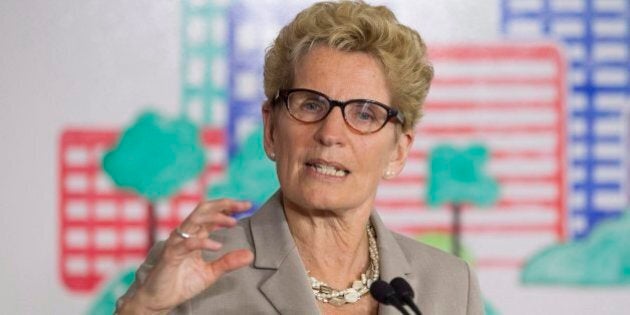
The risks and costs associated with the climate crisis are growing. Also growing are the job and economic opportunities from the clean economy.
We anticipate the Ontario Liberal government's long-awaited plan to address climate change will finally roll out soon. We need to get this right.
As expected, a cap-and-trade system will be the cornerstone of their plan. Under this plan, the government sets a maximum level or "cap" on greenhouse gas (GHG) pollution. The government issues permits to companies that allow GHG emissions up to the cap. If a company's GHG pollution exceed the cap, they must buy more pollution permits. If under the cap, they can sell pollution permits. This provides an incentive for industry to reduce emissions in order to avoid having to purchase more pollution permits or to profit from selling them.
Unfortunately, the Liberal's cap-and-trade legislation gives over 100 of Ontario's biggest polluters a free pass. Handing out free pollution permits undermine the effectiveness and integrity of the cap-and-trade system.
The Green Party supports creating the market conditions for businesses and people to make the best low carbon choices.
In the Liberal plan, the money the government collects will be used to provide incentives to change our collective behaviour and our consumer choices. We anticipate that there will be financial incentives for people to lower their carbon footprint, such as subsidies to buy electric cars or build homes that do not rely on oil or natural gas. Conceptually, these carrots are good, but is this prescriptive central planning approach the best way to go?
For years the Green Party has pushed for a price on carbon pollution that provides a strong financial incentive or stick to reduce carbon pollution. This is known as decarbonizing the economy. Greens have advocated for electric cars and their necessary infrastructure, along with passive solar homes, distributed renewable electricity generation, better transit and other things that we hope are in the government's plan.
I suppose you could say that the provincial government is finally listening to what Greens have been saying. The Ontario Liberals now seem to share many of the "ends" Greens desire for a low carbon economy, but I fear that the "means" the Liberals plan to use to achieve those "ends" are substantially different and not as effective.
The Green Party supports creating the market conditions for businesses and people to make the best low carbon choices. This can be most be most effectively and efficiently achieved with a "carbon fee and dividend" approach to decarbonizing the economy. We would identify all significant sources of GHG pollution -- not just industrial emitters like the existing plan -- and we would charge each source a fee per unit of pollution, based on a fixed carbon price. There would be no government tax involved.
This is a revenue neutral plan. All of the money raised would be returned to adult citizens of Ontario on a per capita basis, as a dividend through a separately administered Special Purpose Account segregated from government revenues. In this way there would be no loss to the economy -- just a reallocation of dollars. Things like gasoline would cost more, but everyone would get a dividend check to offset those cost. If people bought an electric vehicle and didn't need gasoline, they would still get the dividend cheque -- rewarding them financially for reducing their carbon footprint. The dividend would have the added benefit of helping to reduce poverty by establishing the financial foundation for a guaranteed annual income.
The fee and dividend system empowers people and businesses to decide the best way to reduce their carbon footprint. Solutions would not be prescriptive. Government would not pick winners and losers. Market needs would generate the incentives to reduce carbon pollution, not artificial government interventions.
There would be no carbon trading or the need for a carbon trading bureaucracy. The price of carbon would not be subject to the short-term vagaries and fluctuations of a market. It would be set based on the best estimate of the real cost of climate change to our economy, and the agreed international time frame for action.
The Green Party thinks that the best results will be achieved if citizens and businesses themselves are challenged to use their creativity and innovation to achieve the essential goal of a decarbonized Ontario economy. Let's hope the Liberals climate plan uses effective and efficient "means" to reach low carbon "ends."
Follow HuffPost Canada Blogs on Facebook
ALSO ON HUFFPOST: